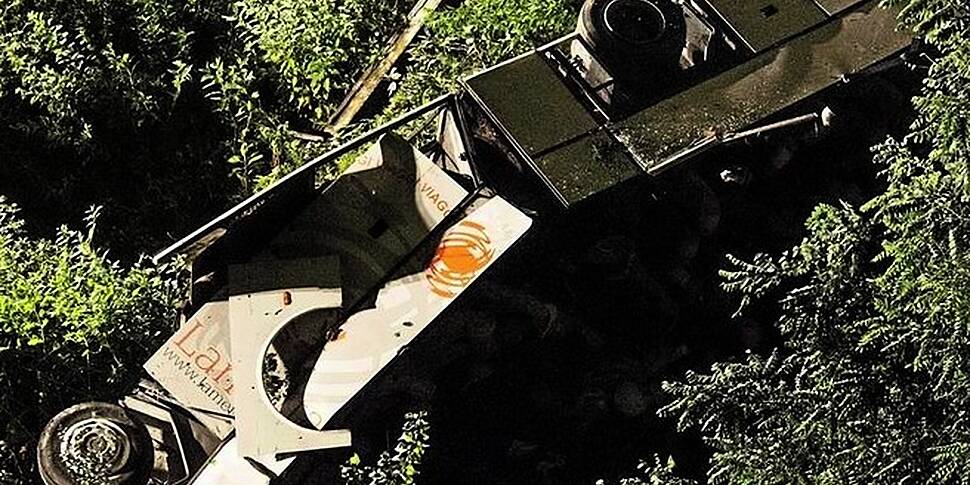Italian police are investigating whether a mechanical fault or excess speed caused a bus crash in which 39 people died. A coach carrying pilgrims went off a bridge in Southern Italy yesterday evening in one of the worst such accidents in Europe in recent years.
Around 10 people managed to survive the crash and are in a serious condition in hospital.
Doctors at the scene say they had to make life and death decisions about who to free first from the wreckage.
"People were crying out amid the corpses," Maurizio Abbenante, who was among the first on the scene, told La Repubblica.
"We had to manage the situation, and decide which people had a chance of surviving, so we could free them first from the wreckage. We had to decide which of the passengers looked like they would definitely survive."
It had smashed into several cars that were slowed by heavy traffic before ploughing through a guardrail and concrete barriers. Witnesses said that the coach appeared to suddenly lose control moments before the incident.
Despite the carnage, emergency services said 10 passengers had a "miraculous escape" and managed to walk away after being cut free.
"They're saying, 'we can't explain it'," journalist Tom Kington, at the scene, said. "People just got up and walked out of the wreckage, including, miraculously, a whole family of four."
Many of the dead were discovered lying outside of the vehicle, while others were found inside the mangled wreckage.
Two people later died in hospital and relatives have been arriving at a local school, serving as a morgue, to identify their relatives.
No children are believed to have died but a spokesman for Santobono Pausilipon hospital in Naples told Italian media that 5 children had been admitted and that none had their parents with them.
Several of those children are in a serious condition and two in a coma, said the hospital's medical director Enrico De Campora.
An investigation into possible manslaughter charges has begun and the wreckage is being examined for signs of mechanical failure.
A post-mortem examination is also being carried out on the driver of the coach.
Rescuers with electric saws worked throughout the night to cut through the twisted metal of the coach and help survivors, stopping occasionally to listen for any cries for help.
The bodies of the dead were laid out on the roadside, covered in white sheets as emergency crews treated the injured. A number of wooden coffins were also brought to the scene, about 30 miles east of Naples.
Highway officials said the coach had been warned about heavy traffic on the A116 motorway near Avellino.
Flashing signs near the flyover were also in place to warn vehicles to slow down. Officials said the driver, for reasons not yet clear, appeared to have lost control of his vehicle.
Some witnesses told Italian media the coach was travelling at "normal speed" before suddenly veering off course, and describe hearing a noise as if the vehicle had blown a tyre.
However, Kington said there were conflicting reports from the scene.
"Others are talking about it arriving on the flyover way too fast," he said. "There were signs apparently warning vehicles to slow down, as there was thick traffic on the flyover".
"Some have said the bus came in too fast and didn't have enough time to slow down, hence the smashing into the other vehicles."
Another line of investigation is that the bus was seriously damaged before the crash.
"Possibly the bus was losing parts of its engine, which have now been found on the road as far back as a kilometre before the incident, suggesting some kind of huge malfunction," said Kington.
The braking system will also be closely examined, as no signs of heavy braking were found on the road.
As well as those killed and injured in the coach, about a dozen people travelling in cars on the flyover also received minor injuries, reported Italian media.
The A116 highway links western and eastern Italy and the passengers had been returning from a weekend trip visiting a religious site in nearby Benevento province, as well a thermal bath.
Most of the passengers were from the area around Naples.
"They were working class Italians," said Kington. "They club together and take trips like they were taking this weekend.









